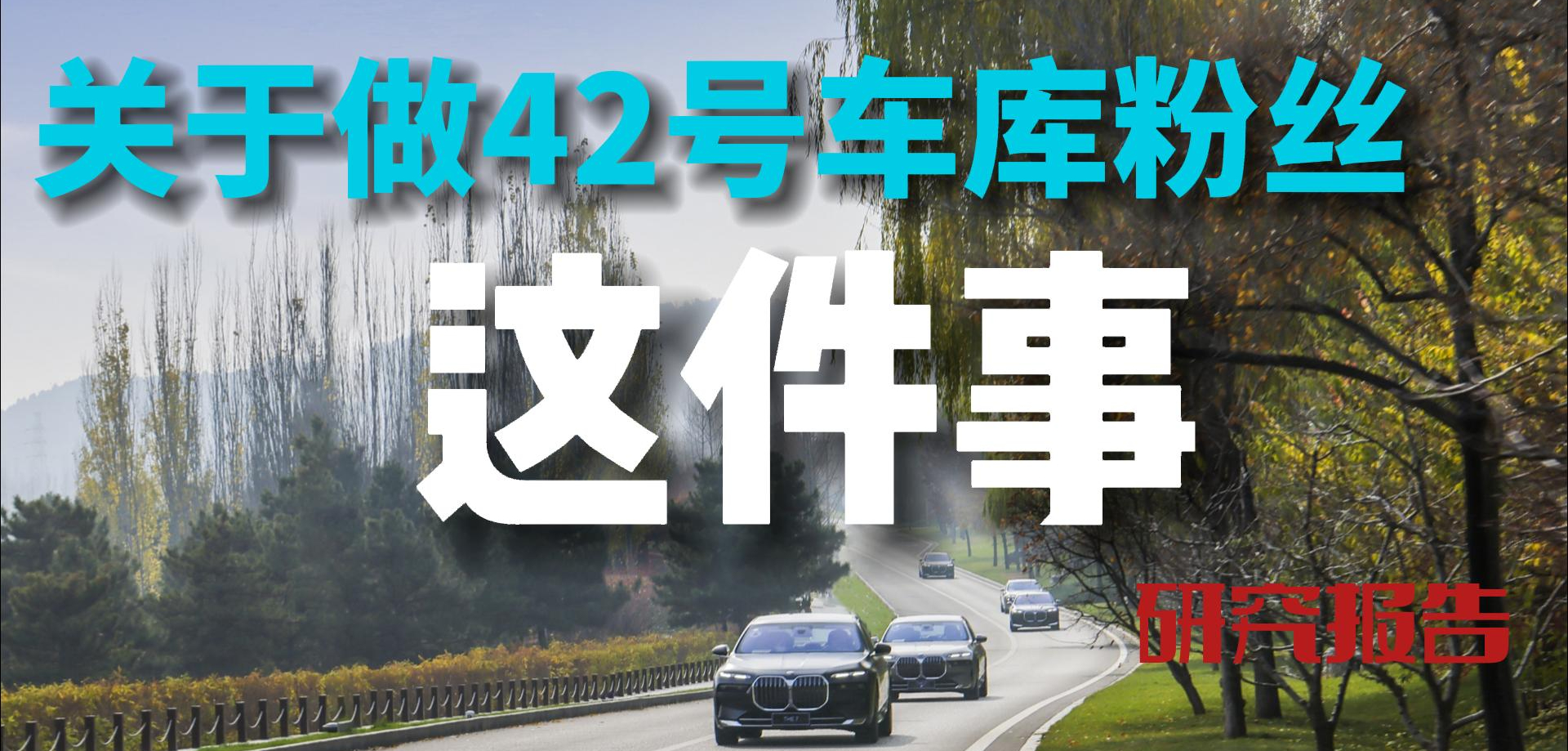Preface
As a longtime fan of 42 and an active user of the Garage app, I had the rare opportunity to participate in the first test drive of the BMW i7.
Because of my interest in electric cars, I was very excited to see BMW, the big brother of traditional car companies, release its flagship model this year – the BMW i7.
I couldn’t pass up such a great opportunity! Let me share my thoughts with you below.
Pretending to Be a Media Teacher for a Day
On April 20th, BMW released the new generation 7 Series and its first pure electric D-class car. As soon as it was released, it caused a great uproar, with the biggest controversy being about the new exterior and the large screen in the rear seats.
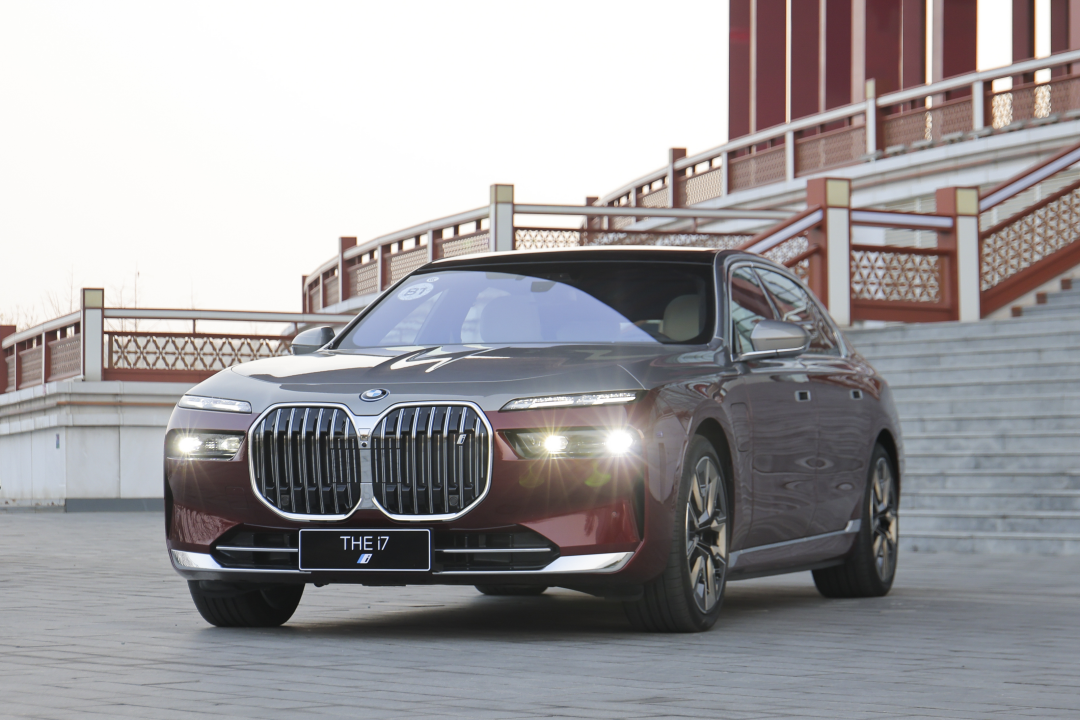
The completely different appearance from the previous models seems to be telling people that BMW’s innovation is not just for show.
Appearance
The BMW i7 looks more square and straight from the outside, and at first glance, some people might even say, “Isn’t this just a Rolls-Royce with a different badge?”
Previously, BMW had released some very important figures: “In global sales of BMW 7 Series, China accounts for 45%, and the average age of car owners is only 38 years old.” This shows that the appearance of this car is not only dignified, but also more youthful, with many sporty elements added to the body.
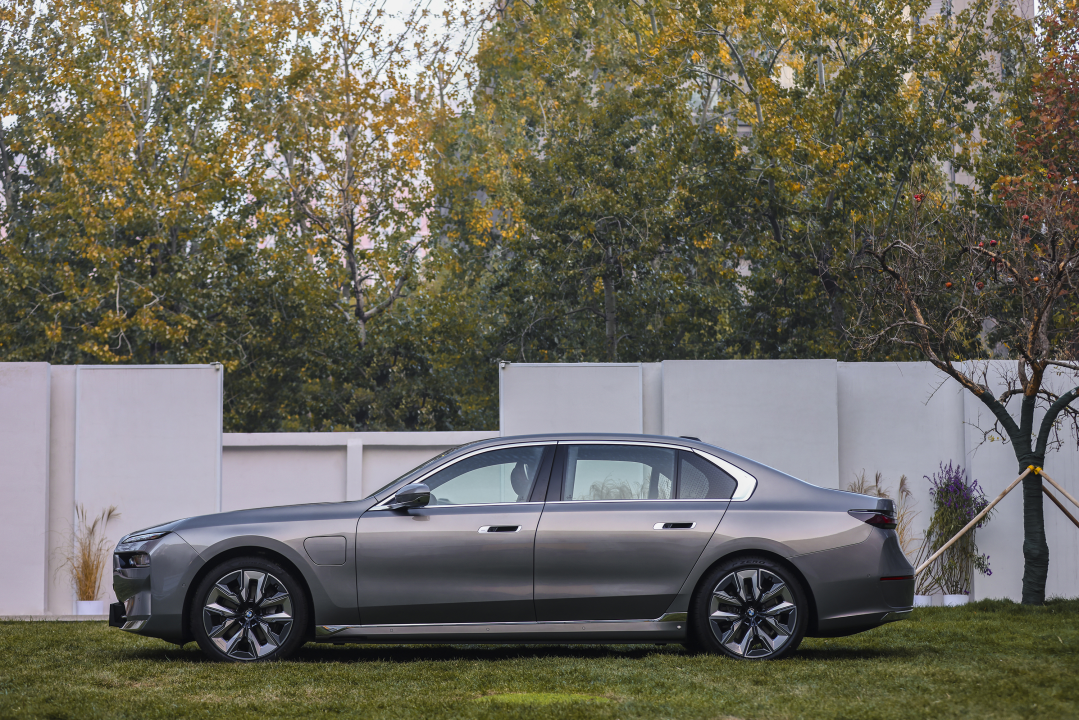
The car is 5,391 x 1,950 x 1,548 mm, with a wheelbase of 3,215 mm. BMW has adopted a globally standardized long wheelbase this time. The longer body brings not only more space, but also a more imposing feeling as a D-class car. Standing next to it, you can clearly feel the luxury and executive presence of the car.

Another highlight of the exterior is the split-style headlights. The daytime running lights are made of Swarovski crystals arranged in an L-shape. Each crystal is equipped with an LED backlight unit, serving as the width indicator and daytime running light. With the circular ring light of the front kidney grille, the moment it is turned on, it makes people understand the meaning of flowing light, and highlights the luxurious and noble qualities of this car.
On the wheel configuration of the i7, it comes equipped with a very large 21-inch wheel hub, which has a very tense visual effect. Matching with it are the silent tires, which greatly improve the quietness during driving.
The slow charging interface of the i7 is designed on the left side of the front of the car, while the fast charging interface is located on the right side of the rear of the car. If you have a garage, you can just drive in and connect to charge, which is quite convenient. Generally, there are more and better quality DC charging piles outside, so reversing into the charging pile is also in line with daily use.
Interior
Like Rolls-Royce, the BMW i7 also features very luxurious electric doors. However, after several experiences, we found that the i7’s electric door response is not very sensitive, and the door closes quickly and loudly. We have also made suggestions to the official that the door should be closed slowly with a suction effect to enhance the luxurious texture.
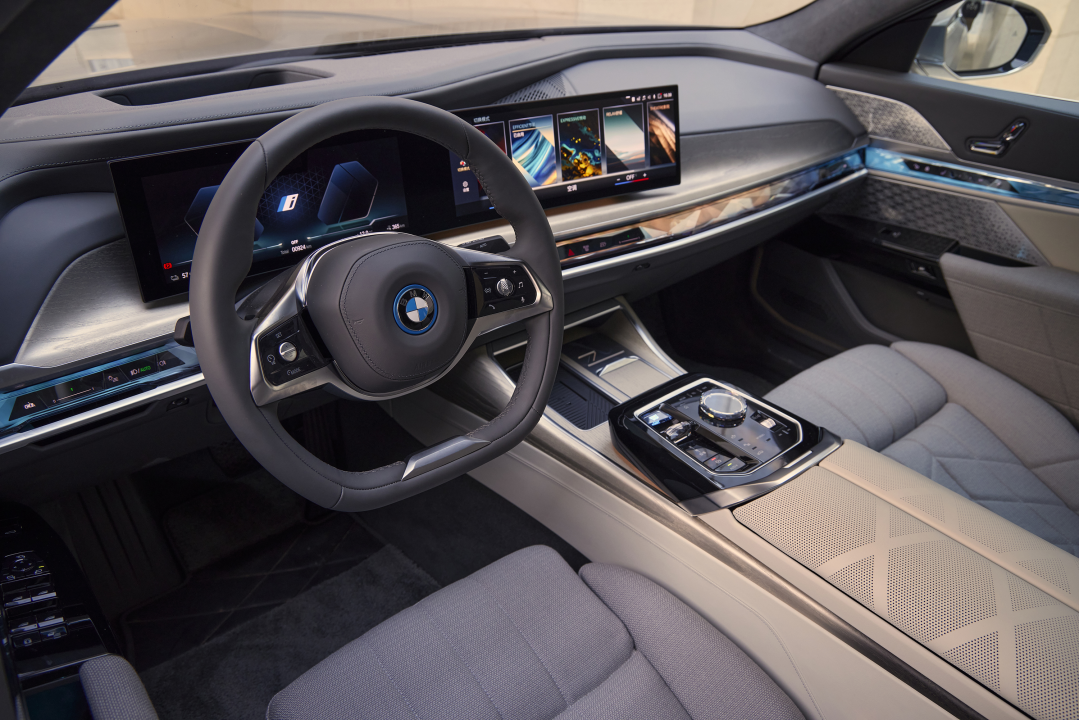
When you enter the car, you will be dazzled. The new generation of BMW 7 Series uses a brand-new interior design, and it is hard to believe that this is the cockpit of traditional car manufacturer BMW, except for the logo on the steering wheel. The huge dual screens in the front row, together with the high-profile and luxurious crystal light strip panel, crystal shift lever, and iDrive knob, make people think that BMW is a major shareholder of Swarovski.
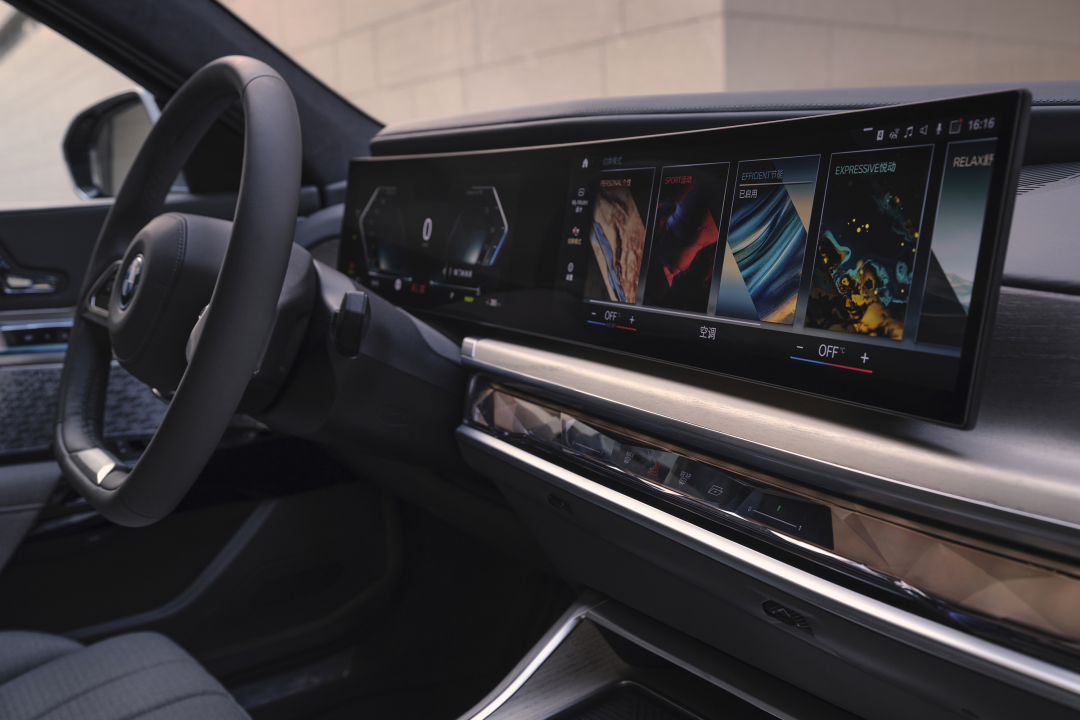
The crystal light strip integrates the control panel and the air outlet is also well hidden. Coupled with the official my modes function, the entire car’s atmosphere expresses different emotions in different scenes.

However, the light strip of the i7 integrates some control panels, and adjusting the air conditioning with the control panel is prone to misoperation, giving people a feeling of unresponsiveness.
When you come to the back row, the superiority of the executive car model is evident. A foldable 31.3-inch 8K resolution screen is BMW’s interpretation of a luxurious cabin this time. The large 32:9 ultra-wide ratio screen provides local applications such as iQiyi and Huawei App Store to meet the Chinese people’s pursuit of vehicle entertainment. Coupled with a total power of 1,965 W, the 36-speaker Bowers & Wilkins audio, the experience is palpable. When the screen is turned off, this large screen will be folded parallel to the skylight.The rear doors of the car are equipped with a large screen control, seat massage and other functions, looking very high-tech. However, the panel response is slow, giving a sense of lag. When entering the business mode and the boss’s seat is reclined, the panel beside it does not support controlling the content displayed on the large screen, plus there is no remote control. The boss needs to retract the seat, which is not so luxurious.
In terms of intelligence, BMW has used a four-way dialogue voice system for the first time, which has significantly improved the response speed compared to other BMW models.
Compared with new forces, there is no continuous conversation function, and each task requires a call every time. It is hoped that it will be optimized in the future. If you need voice assistance to operate setting commands, such as adjusting the strength of kinetic energy recovery, the voice only opens the page for you and reminds the driver to operate it manually, which is not as good as the new forces.
Driving experience
The BMW brand is famous for its driver-centered vehicles, so driving it can show the true strength of a BMW, especially the in-house flagship product – the 7 Series.

The BMW i7 uses BMW’s self-developed fifth-generation electric drive system, which has a rare earth-free synchronous self-excited motor technology. The maximum power of the dual motors at the same speed is 400 kW, and the comprehensive peak torque is 745 N·m. The acceleration time from 0 to 100 km/h is 4.7 seconds, which is between the 740 xDrive and the M760.
The net capacity of the BMW i7’s battery pack is 101.7 kWh, slightly smaller than the 111.8 kWh on the GLS EQS. The cruising range under the CLTC standard is 650 km. In terms of charging, it supports a maximum DC charging power of 195 kW, which is much faster than EQS’s 145 kW. The official claim is that 180 km can be charged in 10 minutes. However, this also depends on how many high-power charging stations there are in the later stages and how they adapt to it.
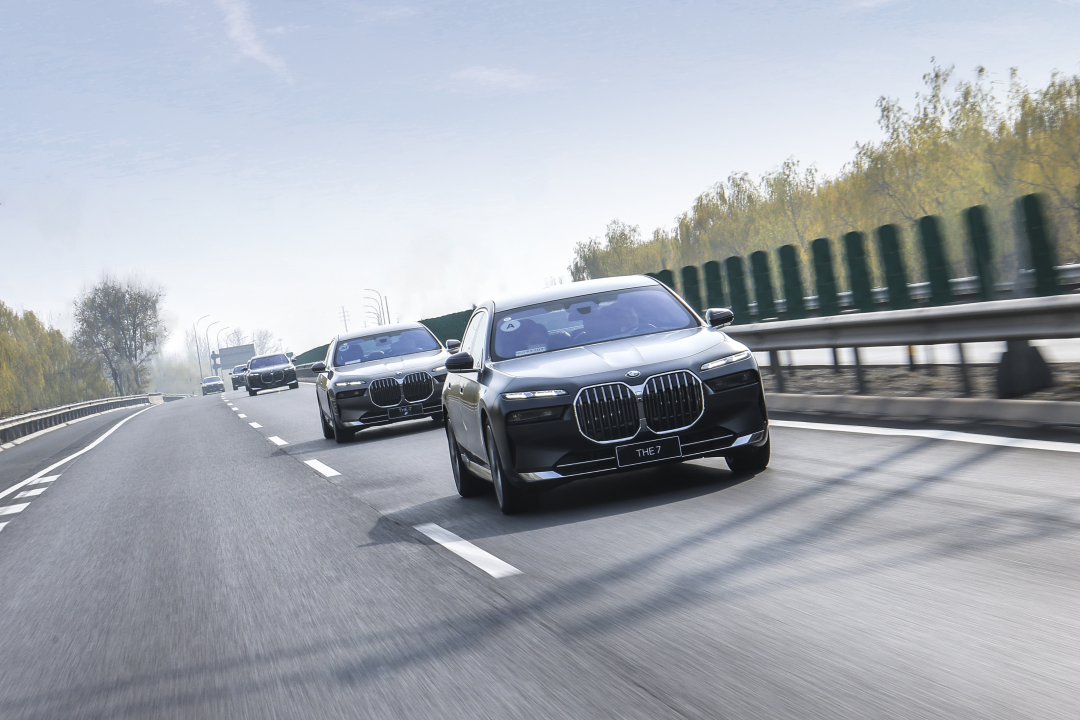
Different from many new energy vehicles, the acceleration and deceleration of BMW i7 is very linear and close to the experience of a gasoline vehicle. It is quite easy to drive on a daily basis.
Paired with the magic carpet suspension, the driving feel is the best among all BMW models I have ever experienced, without any doubt. It is worth mentioning that the biggest difference between the pure electric i7 and the fuel-burning 740Li is the feeling of the chassis. BMW only equipped the i7 with the magic carpet suspension. On the one hand, it can be seen that BMW attaches great importance to this model, and on the other hand, it can also make the heavier body of the i7 show better driving performance. When the left wheel passes over the speed bump and the right wheel is on the flat ground, it can be well filtered to reduce the impact on the right side.On the basis of the air suspension technology, the BMW i7 is equipped with an electronic anti-roll bar, which enables the vehicle to maintain better stability when turning or changing lanes, thus achieving a balance between comfort and sportiness.
For an executive sedan with a length close to 5.4 meters and a wheelbase of more than 3.4 meters, rear-wheel steering becomes particularly important for agile handling and easy turning. After experiencing the rear-wheel steering of the i7, whether making a U-turn on city roads or driving on winding mountain roads, the efficiency improvement brought by rear-wheel steering makes the driver feel free to control this D-class car.
Advanced Driving Assistance
As for advanced driving assistance, the BMW i7 is equipped with L2-level assistance, which is not surprising. However, with more than 30 ultrasonic radars and sensors all over the body, as well as an 8 million pixel sensing camera from Mobileye, BMW claims that the i7 is technically capable of L3-level advanced driving assistance.
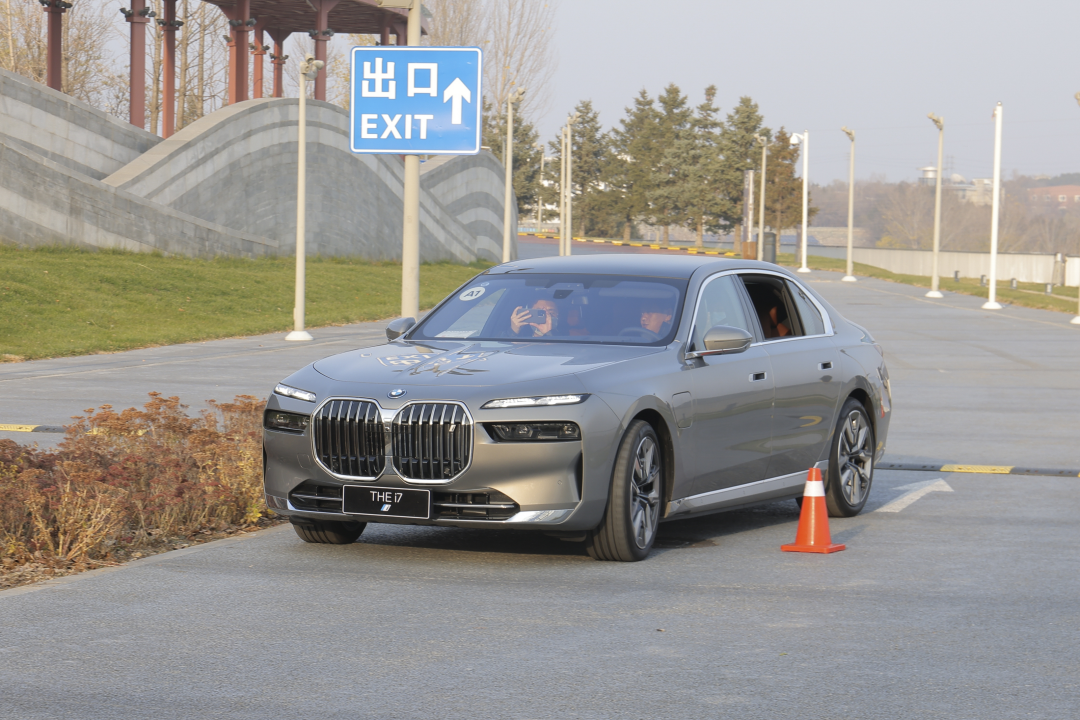
During a test drive on the highway, I found that the way of starting the advanced driving assistance is the same as many other car models, with the start button on the steering wheel, which is quite intuitive.
During the actual experience, the lane-keeping function was relatively stable and could achieve lane-changing by lightly flicking the turn signal lever three times, which is also available on NIO. However, NIO’s system can achieve this function by both lightly and heavily flicking the lever. In addition, adjusting the speed of the i7’s advanced driving assistance is not intuitive enough, which requires a certain learning curve for first-time users.
During the test drive, when encountering a slow-moving large vehicle in front of me without any significant deceleration, the system took over the vehicle automatically, which exceeded my expectations.
As for automatic parking and memory parking, the BMW i7’s trajectory reverse parking feature is highly praised, which means it can park in the same way as it entered, and the 200-meter memory route is upgraded from the 50-meter memory route of the 3 Series, which is very practical for people who frequently drive in narrow alleys.
Although the speed of the automatic parking function has been optimized compared with other BMW models, the experience of the test drive did not show a significant increase in speed, which may be related to the test drive environment. However, the i7 can perfectly park in both parallel vertical and diagonal parking spaces.
Memory parking is actually the same as the trajectory reverse parking feature. The set parking line will be displayed on the car’s display, and the vehicle will stop in time when encountering obstacles. The only deficiency is that the operator still needs to continue to maneuver the vehicle after it stops. The instructor mentioned that this situation may differ in different environments, and I look forward to a more detailed experience in the future.As the 5th pure electric vehicle launched by BMW in the Chinese market, the i7 has a critical mission to drive BMW’s electrification transformation, and as BMW’s current flagship pure electric vehicle, it delivers the expected standards. However, we have higher expectations for BMW.
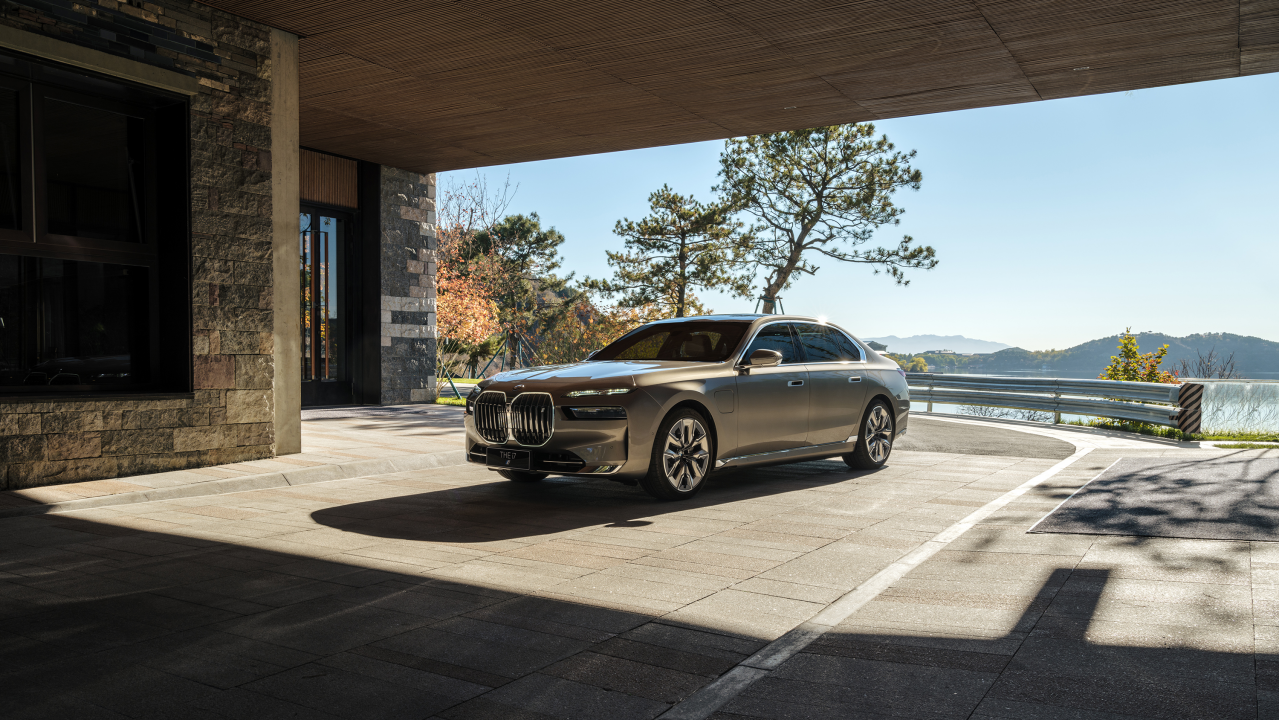
According to official sources, by the end of 2024, the “New Generation” vehicle based on a new architecture will begin trial production and be launched in 2025. By the end of 2025, BMW Group plans to deliver 2 million pure electric vehicles globally. At that time, one quarter of the new cars sold in China will be pure electric, and by 2030, half of BMW’s sales will come from pure electric vehicles.
Do you think BMW can make it?
Conclusion
The leader who gave speeches at the press conference was sitting next to me, chatting with me a lot about the features of the i7. When he learned that I came from “42”, he praised the “42 Garage” very much. Although I looked calm on the surface, I was deeply happy inside. He also proposed that we can review the i7’s assisted driving, saying that they are working hard in this aspect, and they hope to catch up with the first echelon.
It was a very pleasant and unexpected experience, and I learned a lot.
I hope to become a permanent member of the “42 Garage”, which would make me so happy.
Once again, I thank the “42 Garage” and thank Wenny! I hope to have the opportunity to meet you and wish the “42 Garage” better and better!
This article is a translation by ChatGPT of a Chinese report from 42HOW. If you have any questions about it, please email bd@42how.com.
